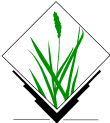Changes between Version 29 and Version 30 of Grass7/NewFeatures76
- Timestamp:
- 01/20/19 06:23:25 (6 years ago)
Legend:
- Unmodified
- Added
- Removed
- Modified
-
TabularUnified Grass7/NewFeatures76
v29 v30 19 19 == Graphical User Interface == 20 20 21 GRASS GIS 7.6 graphical user interface now displays the computational region extent by default in the Map Display window. This simple new feature allows to always visualize such an important basic concept in GRASS GIS and makes it a lot easier for newcomers. Moreover, a new widget has been implemented for commands including an SQL WHERE parameter to ease selection of features/data. Many fixes were aimed to enhance compatibility with wxPython 4. The data catalog, the graphic modeler and the startup have also received many improvements in this new GRASS GIS release. 21 GRASS GIS 7.6 graphical user interface now displays the computational region extent by default in the Map Display window. This simple new feature allows to always visualize such an important basic concept in GRASS GIS and makes it a lot easier for newcomers. Moreover, a new widget has been implemented for commands including an SQL WHERE parameter to ease selection of features/data. 22 23 [screenshots here] 24 25 Many fixes were aimed to enhance compatibility with wxPython 4. The data catalog, the graphic modeler and the startup have also received many improvements in this new GRASS GIS release. 22 26 23 27 == Modules (commands) == 24 28 25 A series of new modules has been added and many improved: 26 27 * G76:r.buildvrt: Build a VRT (Virtual Raster) from the list of input raster maps 28 * G76:r.path - Traces paths from starting points following input directions 29 A series of new modules has been added and many improved. 29 30 30 31 === General modules === … … 34 35 === Raster modules === 35 36 36 New modules: 37 * G7:r.path: extract a shortest path from the output of r.cost, r.walk, r.watershed 38 * G7:r.buildvrt: build a virtual raster (VRT) that is a mosaic of the list of input raster maps 39 * ... 37 This new GRASS GIS release comes with 2 new dedicated raster modules. The first one, G7:r.path, can be used to trace paths from different starting points following input directions, such as the outputs of G7:r.cost, G7:r.walk or G7:r.watershed. The second, G7:r.buildvrt, provides the very useful functionality of creating virtual rasters (VRT) mosaics from a list of input raster maps. This allows processing big areas while avoiding the creation of physical maps, especially useful when space is limited. 38 39 [screenshots here] 40 40 41 41 Several other raster modules have been improved with new options, flags or parallelization support:
